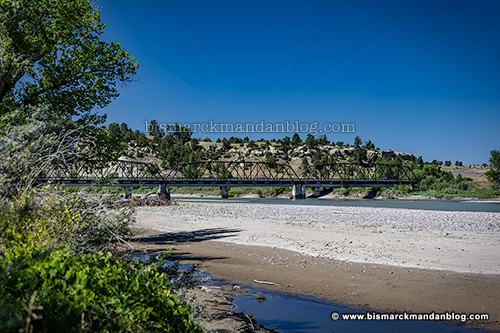
While visiting Pompeys Pillar last year, I caught an interesting sight along the Yellowstone River: the Bundy Bridge. See it back there? It has a form similar to the historic Northern Pacific railroad bridge here in Bismarck-Mandan, the one a local group of activists wants to preserve. I ventured over to this bridge and discovered a useful object lesson relative to the bridge back home – and the efforts to preserve it.
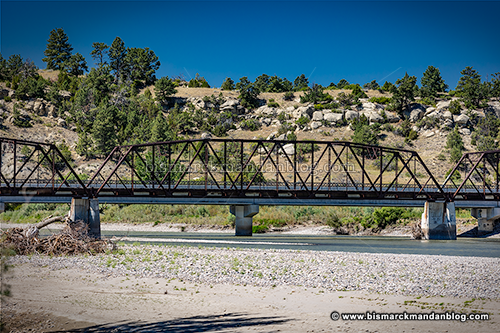
Does something look amiss with this historic bridge? Yeah…I see it too: the scenic view is photobombed by the modern replacement for the original bridge. In fact, there isn’t an angle of this bridge which doesn’t get spoiled by the new bridge built right next to it.
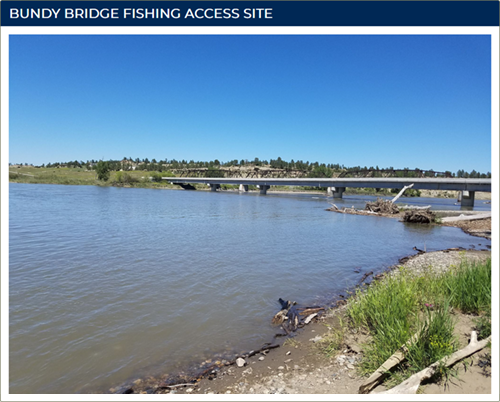
Here is the other side of the scenic bridge. This photo from the site’s web page gives an example of what the north view of the NP bridge will resemble: the historic bridge is barely visible. I haven’t seen anything like this in the campaign to save the bridge here in Bismarck-Mandan.
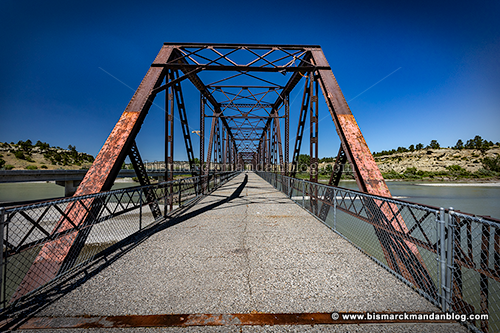
Then there’s the issue of maintenance of the old NP bridge if it’s allowed to stand. Who’s gonna pay? “Donors.” Right. Even the cities of Bismarck and Mandan know they’ll get stuck with the bill, and it’ll be more than they (and we the taxpayers) can afford. So then there are taxes, I suppose…a significant portion of property tax bills are levied by the Park District, so turning the NP bridge into a park would likely impact that tax bill.
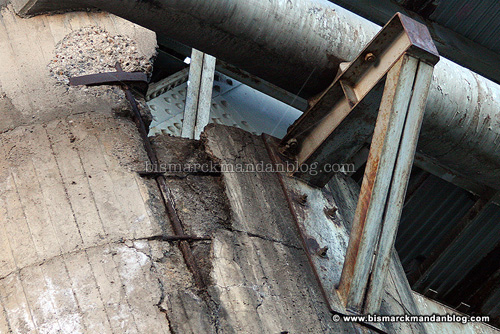
I shot a set of photos like this at the old Liberty Memorial Bridge before it was replaced. There was a significant amount of structural deterioration, and the same can be expected of the NP railroad bridge eventually. Some deterioration may already be the case, but I haven’t had the opportunity to try the same photos. Despite what many insist, the bridge is private property.
Who foots the bill when the NP bridge inevitably develops problems like this? FORB? These purported “donors”? The amount it would take to repair this type of deterioration, if possible – or the eventual removal of the bridge, because it won’t last forever – would likely be staggering.
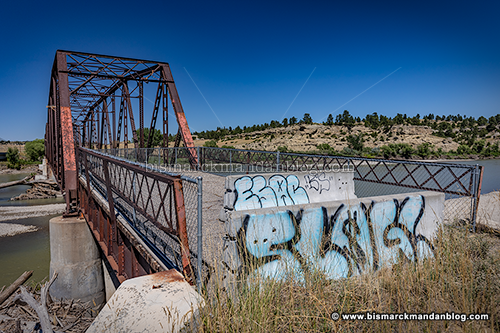
Here’s another issue: vandalism. There has already been junk spray painted on the pilings of the NP bridge, even with the railroad looking after it. What do you suppose will happen when nobody’s patrolling the old bridge?
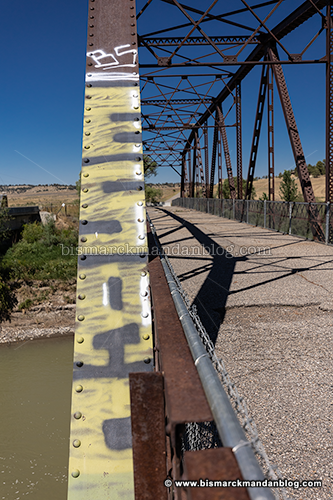
…or would the cities have to hire security guards or assign police patrols in an attempt to prevent this sort of thing? Or would they just let it happen? I haven’t heard a satisfactory answer to this question from the FORB folks.
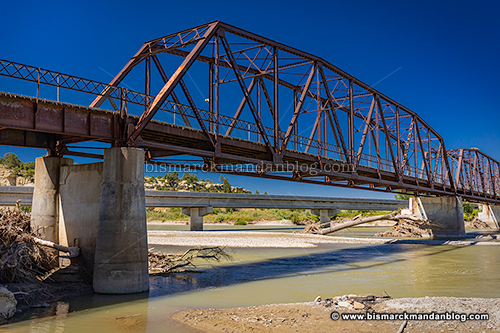
Frankly, I don’t think the FORB folks have even considered the idea that the historic NP bridge would never be the same even if they did manage to preserve it. Those iconic views and photos of the NP bridge, including the one which has become trademark for this photo blog are history.
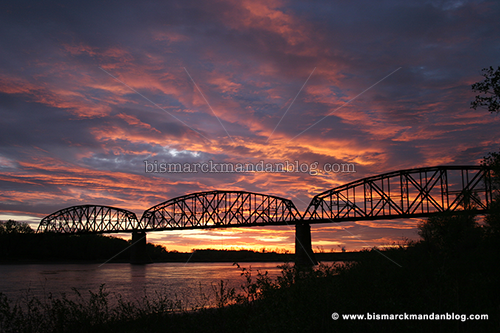
Don’t get me wrong: I love this bridge as much as the next person. It’s one of the few scenic, historic items we have left in Bismarck-Mandan. Sadly, the time for its replacement has come. I wish both the NP bridge and the Liberty Memorial Bridge were viable and still standing. But from a realistic standpoint, the old railroad bridge has got to come down. Time marches on. The idea that the old bridge can remain standing and still provide the beauty we’ve enjoyed all our lives is a fantasy. It’s time to face reality.

The state of North Dakota could take possession of the bridge and take responsibility for maintaining it. In South Dakota, 109 miles of the Mickelson Trail are developed and maintained by the state. Thousands of people come to the state to ride the trail.
Bismarck is talking about developing the Missouri Riverfront. The RR Bridge could be a large part of that development.
Yes, the view of the bridge and from the bridge will be different than it is now. But that’s better than being just a distant memory.
There’s a big difference between an actively used railroad bridge and the Mickelson Trail. The state shouldn’t just seize private property for this purpose as you suggest. Then there’s the impact to the waterway if both bridges remain. It’s a far more complex issue than the FORB folks care to admit.
I agree with your comments. The cost of maintenance and eventually the removal of the old bridge would be very costly. Just as in life we have a beginning and an end and it’s time to let the bridge go.